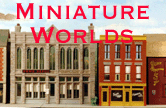

According to the 1944 Air News Yearbook, vol 2,
Heaviest fighter aircraft in the world, the Black Widow has the general dimensions of a medium bomber and carries a generous bomb load on intruder operations. Two radial air-cooled supercharged 2,200 HP Pratt & Whitney engines allow the Widow to cruise slowly at an economical 160 MPH or top 350 MPH when necessary. Armament consists of 20-mm cannon and 50-cal. machine guns, with four guns mounted in the dorsal power turret and cannon or guns accomodated in th eventral positions. A three-place aircraft, the P-61 is a high-wing monoplane with a tail booom running after from each engine nacelle [like the P-38]. Landing gear is tricycle type. Wing span 66'; length 45'.
Interestingly, the author here never mentions why the airforce had such a large, heavily armed but comparatively slow plane built in the first place.However, aterial on the Mid-Atlantic Air Museum's website explains,
The need for a true night fighter aircraft was well demonstrated during the Battle of Britain in 1940. Aircraft used to counter German night attacks operated by moonlight, searchlights, and were only infrequently aided by ground-based radar, and were, as a result, not very effective.
At the direction of the Air Corp's Carl A. Spaatz, John Northrop submitted a ground up night fighter design, which, designated as the XP-61, first flew on May 26, 1942.
The Black Widow was the first aircraft totally designed as a night fighter. Its innovative slotted flaps and spoiler ailerons allowed operation from short airstrips and improved handling; the radar carried in its nose made it the dominant force in the night skies of Europe and the South Pacific. From July 6, 1944, when it claimed its first victory, to war's end, the P-61 distinguished itself as one of America's most unique fighting machines. After the war, P-61s were used in reconnaissance, weather research, and flight testing. The first American flight ejections were made from a P-61. [source]
As I recall from other sources, it was intended as a heavily armed nightfighter that could either accompany bombers over Japan or carry out other kidns of missions. I wondered how many of these strange planes, which in some ways seem to be early anticipations of the A-10 Warthog, were built, and the US Airforce Museum site states that 2 test versions, 13 service test versions (called the YP-61), 80 P-61s with a power turret, 120 P-61As without a top turret, 450 P-61Bs with drop tanks, and 41 P-61Cs with new engines and a top turret. After WWII, Northrop manufactured 36 more — now designated F-61 — as "unarmed photo-reconaissance aircraft." They cost $170,000 a piece.
This model, which I built from a Monogram or other plastic kit in the early 1980s, was airbrushed and decaled, and I used black draughtman's tape for the windows. [GPL].
Other views: (1) detail of the plane's nose (2) A three-quarter rear view
Air News Yearbook, vol 2. ed. Phillip Andrews. New York: Duell, Sloan, and Pearce, 1944.
J. Baugher's Northrop P-61 Black Widow site.